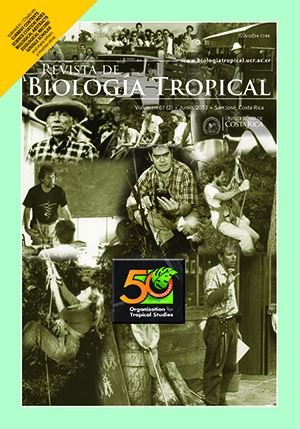Abstract
Alibertia patinoi (Rubiaceae) is of economic and cultural importance for communities in the Colombian Pacific and Amazon regions, where it is cultivated and mature fruits are highly appreciated and consumed. Since there is a lack of knowledge of the seed physiology of this species, we describe here the germination behavior and morphometry of seeds of Alibertia patinoi, and relate them to its habitat. Fruits were collected from a mixed food crop and a commercial plantation in Guaimía village, Buenaventura, Colombia, a tropical rain forest area. We measured length, width, thickness, mass (n=1 400), and moisture content of seeds (n=252). Primary dormancy tests were conducted (n=200), followed by imbibition (n=252) and germination dynamics, under different conditions of light and temperature specific to understory and forest clearings (n=300 seeds). Finally, seed storage behavior was established (n=100 seeds). We observed that size and mass of seeds had a narrow range of values that did not differ within or among fruits and that the species did not exhibit primary dormancy. The seeds are recalcitrant, and recently harvested seeds exhibited higher seed moisture content (ca. 44%) and continuous metabolism. The seed germination percentage was observed to be higher under the specific dense canopy forest light and temperature conditions; furthermore, neither enriched far-red light nor darkness conditions inhibited germination. We concluded that rapid germination could be the establishment strategy of this species. Also, the physiological traits (i.e., rapid germination rate, low germination requirements, absence of primary dormancy, and recalcitrant behavior) and seed size and mass, suggest that A. patinoi is adapted to conditions of mature tropical rain forests.##plugins.facebook.comentarios##
Downloads
Download data is not yet available.






